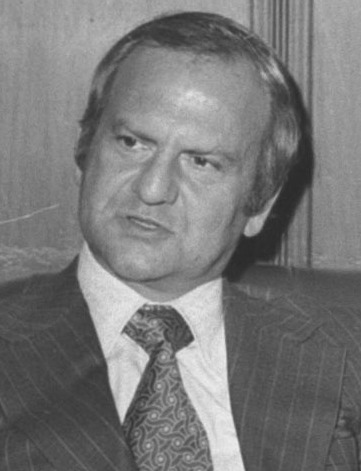The Chrysler K-cars were a series of compact cars introduced by the Chrysler Corporation in the early 1980s. These vehicles played a pivotal role in rescuing the company from the brink of bankruptcy and reshaping its future. Here is the detailed story of the Chrysler K-cars:
Background and Development
Chrysler’s Financial Struggles

In the late 1970s, Chrysler was facing severe financial difficulties due to a combination of poor sales, high production costs, and the economic downturn. The oil crises of the 1970s had also shifted consumer demand toward more fuel-efficient vehicles, leaving Chrysler’s lineup of larger, less efficient cars at a disadvantage.
Enter Lee Iacocca

Lee Iacocca, a former Ford executive credited with the development of the Ford Mustang, joined Chrysler in 1978 as the company’s CEO. He recognized the need for a new line of cars that would be fuel-efficient, affordable, and versatile enough to appeal to a broad market.
Design and Engineering

The K-platform was developed under the leadership of Hal Sperlich, who had previously worked with Iacocca at Ford. The design focused on front-wheel drive, which allowed for more interior space and better fuel efficiency. The engineering team aimed to create a platform that could support a variety of body styles, ensuring maximum versatility and cost-efficiency in production.
Launch and Models
Initial Models

The first K-cars, the Dodge Aries and the Plymouth Reliant, were introduced in 1981. They were available in several body styles, including two-door coupes, four-door sedans, and station wagons. The K-cars were powered by a 2.2-liter inline-four engine, with an optional Mitsubishi-sourced 2.6-liter engine.
Key Features
- Fuel Efficiency: The K-cars were designed to be fuel-efficient, aligning with consumer preferences during the post-oil crisis era.
- Affordability: Priced competitively, the K-cars offered an attractive option for budget-conscious buyers.
- Versatility: The K-platform’s modular design allowed for a wide range of body styles and future model variations.
Impact and Legacy
Financial Turnaround
The introduction of the K-cars is widely credited with saving Chrysler from bankruptcy. The cars sold well, thanks to their combination of practicality, efficiency, and affordability. The government loan guarantees, which Iacocca secured by demonstrating the potential success of the K-cars, provided Chrysler with the necessary funding to restructure and survive.
Expansion of the K-platform

Following the initial success, Chrysler expanded the K-platform to include more models, such as the Chrysler LeBaron and the Dodge 400. The versatility of the platform also led to the creation of the minivan, another significant innovation attributed to Chrysler. The Dodge Caravan and Plymouth Voyager, introduced in 1984, were based on an extended K-platform and became extremely popular, creating a new market segment.

Here’s a list of the range and the expansion
Initial K-Cars
- Dodge Aries (1981-1989)
- Body styles: 2-door coupe, 4-door sedan, 4-door station wagon
- Plymouth Reliant (1981-1989)
- Body styles: 2-door coupe, 4-door sedan, 4-door station wagon
Mid-Range and Luxury Models
- Chrysler LeBaron (1982-1988, for K-car variants)
- Body styles: 2-door coupe, 4-door sedan, 4-door station wagon, convertible (from 1982)
- Dodge 400 (1982-1983)
- Body styles: 2-door coupe, 4-door sedan, convertible (introduced in 1983)
- Chrysler New Yorker (1983-1988)
- Body styles: 4-door sedan
- Chrysler E-Class (1983-1984)
- Body styles: 4-door sedan
- Dodge 600 (1983-1988)
- Body styles: 2-door coupe, 4-door sedan, convertible (introduced in 1984)
Sports and Performance Variants
- Dodge Daytona (1984-1993, using K-derived platform)
- Body styles: 3-door hatchback coupe
- Chrysler Laser (1984-1986)
- Body styles: 3-door hatchback coupe
Specialty Variants and Derivatives
- Chrysler Executive Limousine (1983-1986)
- Body styles: Extended 4-door sedan, limousine
- Chrysler Town and Country (1983-1986, station wagon; later minivans were also K-based)
- Body styles: 4-door station wagon
Extended K-Car Derivatives
- Chrysler LeBaron GTS (1985-1989)
- Body styles: 5-door hatchback
- Dodge Lancer (1985-1989)
- Body styles: 5-door hatchback
Minivans (K-Platform Derivatives)
- Dodge Caravan (1984-1990 for first generation)
- Body styles: Minivan
- Plymouth Voyager (1984-1990 for first generation)
- Body styles: Minivan
- Chrysler Town & Country Minivan (1989-1990 for first generation)
- Body styles: Minivan
Compact and Economy Models (K-Based)
- Plymouth Caravelle (1983-1988)
- Body styles: 4-door sedan, 4-door station wagon (in Canada)
- Dodge Dart (1985-1989, K-based models in Mexico)
- Body styles: 4-door sedan
- Chrysler LeBaron Coupe (1987-1995, extended K-platform)
- Body styles: 2-door coupe, convertible
These models demonstrate the adaptability of the K-platform, which allowed Chrysler to offer a wide range of vehicles across different market segments.
Long-term Influence
The success of the K-cars and the minivans revitalized Chrysler, enabling the company to invest in new technologies and designs. The K-platform set a precedent for platform sharing and modular design in the automotive industry, practices that are now commonplace.
Conclusion
The Chrysler K-cars were not just a series of compact cars; they were a symbol of innovation and resilience. By addressing the needs of the market with practical, efficient, and affordable vehicles, Chrysler was able to pull back from the edge of financial disaster. The K-cars’ influence extended beyond their immediate success, shaping the future direction of the company and leaving a lasting legacy in automotive history.
